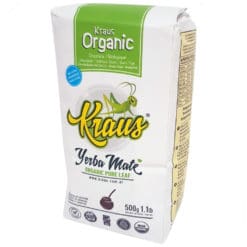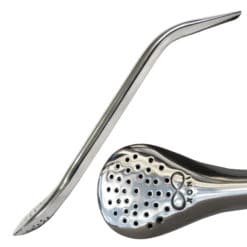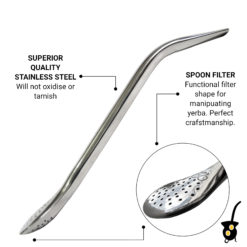Yerba Mate Article
The Palo Santo Diaries Part 1: Whiskey & Wood

For the novice drinker who wishes to partake in the traditional preparation of yerba mate, the decision of what sort of mate – or gourd – to be purchased is one that must be made early on. For non-natural gourds, the two most popular options are glass and ceramic, although mates made of silicone have recently been growing in popularity. An advantage of these cups is that they do not require curing prior to their first use, meaning you are good to get drinking right away.
Natural gourds made of calabash or wood do require more care and attention, although this should not be a reason to avoid them, as they have a number of advantages over their more modern counterparts. In this article we will focus on Palo Santo, a type of wooden mate popular in Argentina.
Origins and Uses:
Palo Santo, otherwise known as Bursera Graveolens, is a hardwood tree that grows widely across Southern and Central America. Most of the wood used to make mates grows in the Gran Chacho region of Northern Argentina, Paraguay and Bolivia. For many generations the wood has been used in traditional medicine to treat ailments of the stomach, one such treatment involving the burning of the wood along with yerba mate leaves and feathers of the Rhea bird.
In more recent times, Palo Santo wood has been used for incense making, and the essential oil is popular in aromatherapy. The burning of Palo Santo has traditionally been believed to rid the home of negative energy.
Yerba Mate:
Palo Santo’s use as an aromatic accompaniment can offer us some clues as to why it has became a popular choice for the production of yerba mate drinking cups, that is to say it is naturally fragrant, pairing excellently with the smoky and earthy tones of yerba mate.
The main complaint with Palo Santo is that it is liable to cracking, although the degree to which an individual mate will crack cannot be determined from simply looking at it. Some believe the cracking to be an inevitable result of the wood expanding and retracting with the addition of hot water, and that this just has to be accepted. Others have suggested that the chance of serious fissures can be significantly reduced by a proper and patient curing of the wood. In reality there is no exact science to this, or at least not one readily observable by us mere mortals! All we can do then is to discuss our own experiences with this wood, so that others may know what to expect when choosing a Palo Santo mate.
Curing the Mate:
For my experiment I took two similar Palo Santo mates sold by UruShop, the regular and extra thick varieties, both wrapped in aluminium. The aluminium wrapping is designed to prevent the mate from leaking should cracks occur, but also serves to insulate the cup meaning that it retains heat for much longer.
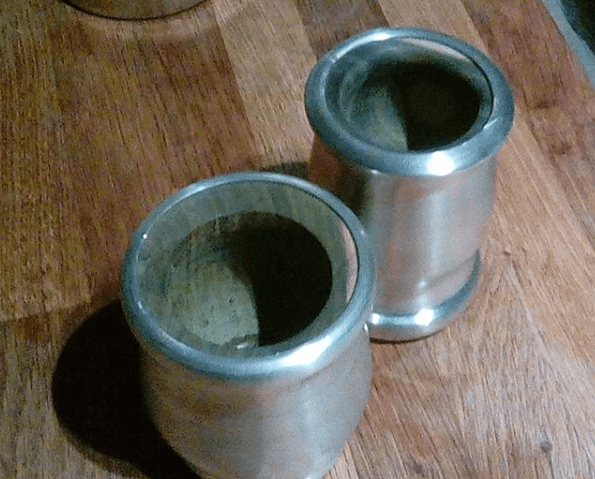
The first two stages of the curing process for both mates was identical. Firstly I took a small amount of pure organic virgin coconut oil and rubbed it into the inner wall of the mates until they were evenly coated.
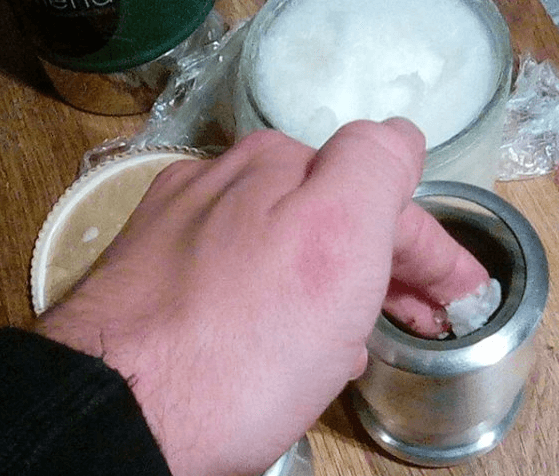
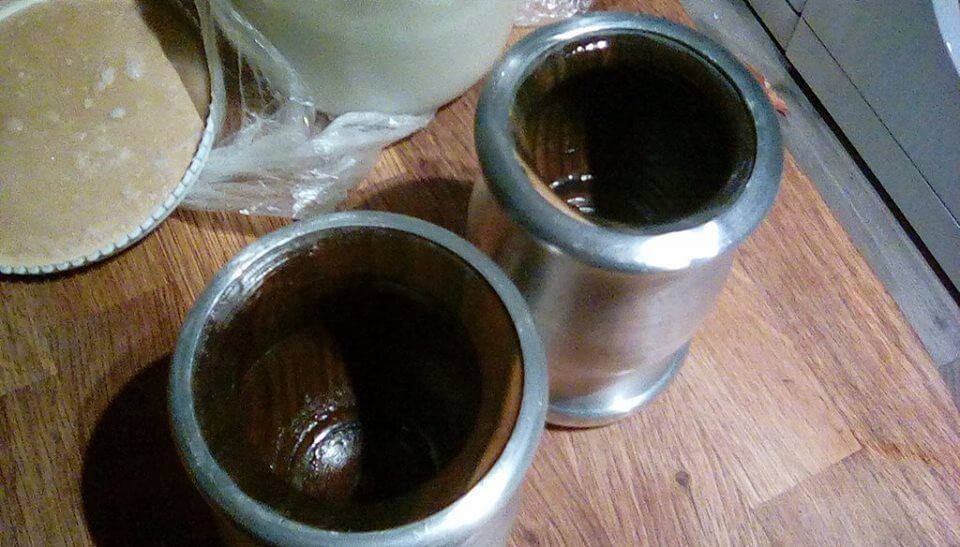
This was followed with both mates being filled to the brim with some damp yerba from my previous session, and left to cure for 24 hours. Please note, when doing this yourself at home make sure the yerba is not too wet, as this might over-saturate the uncured wood.

The next evening the damp yerba was discarded, both mates rinsed out, and then left for another 24 hours to dry fully.
For the final stage I decided to take the smaller and thinner of the two mates and cure the wood with American Tennessee whiskey. I had read in various places that alcohol could be used to cure wooden and calabash gourds, so I thought I would give it a try here. I choose whiskey because I have always considered yerba mate – with its sharp and smoky characteristics – to bare some similarities to this most malty of spirits. After adding a tiny amount of whiskey to the gourd, I gently massaged it into the wood with my finger until all the liquid was absorbed. The mate was then left for a further 24 hours to dry, and the process of rubbing whiskey into the wood was then repeated.

First Impressions & Results:
Before undertaking this experiment I had never myself owned a Palo Santo mate, only ever having drunk from cups belonging to others. After 3 weeks of near-exclusive Palo Santo drinking, I have concluded that I would never want to be without one of these mates in my arsenal.

The added aroma provided by Palo Santo wood is very noticeable to say the least, and the sensation of holding your nose above the mate as you go to consume the hot liquid through the bombilla is remarkable. As around 80% of taste is said to come from smell alone, the Palo Santo with its amplified aromas presents a flavour that is notably more rounded and full when compared to other kinds of gourd. As might be expected, the Palo Santo makes drinking smoky and full-bodied yerbas even more enjoyable, and those such as the pungent La Merced Barbacua an absolute treat! The real discernible differences, however, can be detected when drinking lighter-bodied yerbas, such as the unsmoked Kraus Organic, and this is where the highly fragrant nature of the wood really comes into its own.
As far as differentiating between the mate cured with whiskey and the one cured without, the first couple of sessions in the whiskey cured cup certainly had a noticeable sourness that was not present when drinking from the other mate. The long-term effects that this extra curing will have on the wood are yet to be known however.
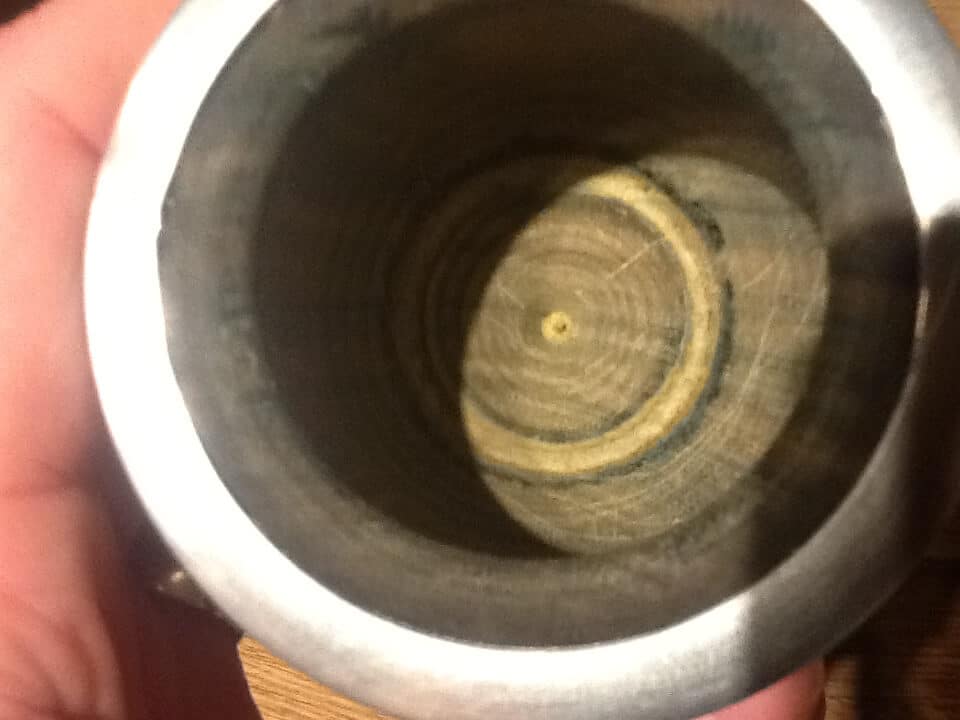
To sum up then, I realise that a follow-up piece to this article will be needed a few months down the line, in order to report back on how the mates are fairing after a bit more usage. So far both are showing a small amount of hairline splitting in the wood, but nothing approaching what I would consider a serious crack. At this stage my advice to anyone reading this who is considering the purchase of a Palo Santo mate would be to definitely opt for one, especially if you are particularly keen on the woody and smoky flavours for which yerba mate is so revered.
Keen to see the results? Read the follow up to see how the palo santo mate cups are faring after 6 months, click here to read.
Keen to share your Palo Santo experiences? Get in touch, [email protected].


